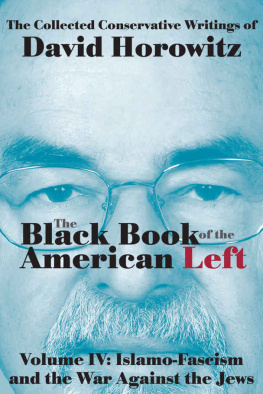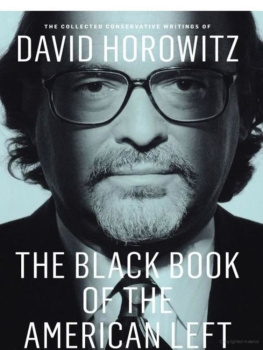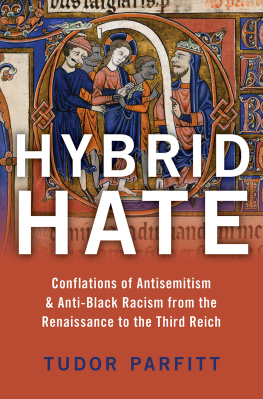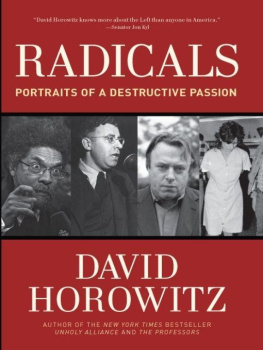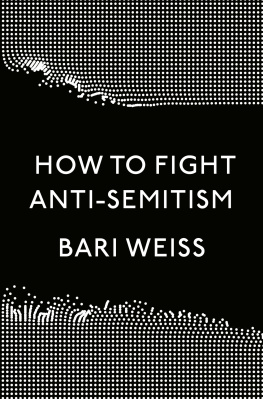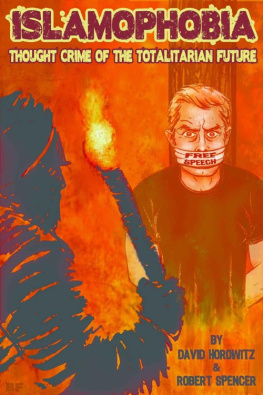2014 by David Horowitz
All rights reserved. No part of this publication may be reproduced, stored in a retrieval system, or transmitted, in any form or by any means, electronic, mechanical, photocopying, recording, or otherwise, without the prior written permission of Second Thoughts Books, 14148 Magnolia Blvd., Sherman Oaks, California, 91423.
First American edition published in 2013 by Second Thoughts Books.
Manufactured in the United States and printed on acid-free paper. The paper used in this publication meets the minimum requirements of ANSI/NISO Z39.48 1992 (R 1997) (Permanence of Paper).
Book design and production by Catherine Campaigne; copy-edited by David Landau; research provided by Mike Bauer.
FIRST AMERICAN EDITION
LIBRARY OF CONGRESS CATALOGING-IN-PUBLICATION DATA
Horowitz, David, 1939
The black book of the American left : the collected conservative writings of David Horowitz / by David Horowitz.
volumes cm.
Includes bibliographical references and index.
ISBN: XXXXXXX
1. Social movementsUnited StatesHistory. 2. RadicalismUnited States. 3. Anti-AmericanismUnited States. 4. Horowitz, David, I939- Political and social views. I. Title.
HX86.H788 2013
335.00973
2013000496
10 9 8 7 6 5 4 3 2 1
eBooks created by www.ebookconversion.com
Contents
INTRODUCTION TO VOLUME IV
Islamo-Fascism and the War Against the Jews
L ike the previous installments of The Black Book of the American Left, this volume addresses the role progressives played in undermining the defense of Western civilization against the totalitarian forces determined to destroy it. The present volume focuses on the holy war or jihad waged by totalitarian Islamists in their quest for a global empire. It is divided into three sections, the first and third of which contain narratives of campaigns I organized to confront the growing Islamist presence on American college campuses. While these accounts describe a cultural conflict in university communities, they have implications for a parallel culture war in the society at large.
The Achilles heel of democratic societies, as the Polish philosopher Leszek Kolakowski once observed, is also their moral foundationthe principle of tolerance, which they extend even to those who want to destroy them. The Islamists understand this vulnerability and therefore have exploited it as a central strategy along with the intimidation they conduct through terror. By deploying defamatory expressions like bigotry and Islamophobia, they seek to stigmatize their opponents, namely anyone who attempts to draw attention to the political nature of their movement, its imperialistic ambitions, its support for terrorism, its oppression of women, its hostility to other religions, and its virulent hatred of Christians and Jews. By casting themselves as the victims of religious persecution, Islamists have succeeded to a remarkable extent in censoring and marginalizing these critics. The narratives included in this volume illustrate these strategies and their agents in action.
The Islamists success in the wider society is evidenced in the censorship that even government agencies have imposed on their own utterances, and on the institutional guides they have developed for dealing with national security threats. For example, the 9/11 Commission Report on the Islamic attacks of September 2001 referred to Islam 322 times, used the word Muslim 145 times and jihad (holy war) 126 times. But even though Osama bin Laden called his jihad a religious war against the Jews and Crusaders, the Bush administration described its response to the 9/11 attacks as a War on Terror without any reference to Islam. By using the neutered term terror to describe the Islamist threat, the administration obscured not only the religious nature of the attacks but the fact that the Islamists did not confine their tactics to military strikes but also pursued their goals through sophisticated political movements designed to infiltrate and subvert non-Muslim societies.
By the end of more than a decade of pressure from domestic Islamists and the political left, the religious nature of the war had become practically invisible, even to American counter-terrorism organizations. In the words of one member of the House subcommittee on crime, terrorism and homeland security, The current FBI counterterrorism lexicon, [which describes] the language they can use, does not include jihad, does not include Muslim, does not include Islam. It includes violent extremism many times, but it does not include sharia [the Islamic law jihadists are seeking to impose globally]. It does not even include Al-Qaeda, Hezbollah, or Hamas. Even the National Intelligence Strategy 2009 does not include references to jihad,, Muslim, or Islam.
When the Obama administration took office in 2009, even more changes were instituted to shield not only the public but also the Department of Homeland Security and counter-intelligence agencies from the fact that the war against the West was based on an ideology shared by millions (probably hundreds of millions) of devout Muslims and sponsored by heavily armed Islamic regimes; or from the fact that it was a war at all. Under Obama, even the denatured term War on Terror was dropped from official pronouncements and replaced by the meaningless subterfuge, overseas contingency operations. The Obama administration designated the largest post-9/11 attack on American soil, the 2009 massacre of 13 American soldiers by a jihadist screaming Allahu Akbar, as workplace violence, denying the 39 soldiers wounded in the attack the Purple Hearts they had earned.
Islamophobia, the opening chapter of this volume, is an essay co-authored with Robert Spencer, one of the foremost scholars of Islam and a valued colleague. It describes the international campaign to marginalize and ultimately silence critics of the jihad through the passage of what would amount to anti-blasphemy laws. Anti-blasphemy laws are the cornerstones of totalitarian states, outlawing speech that challenges their rule. Such laws have already been adopted by several Islamic governments. The agenda of the Islamophobia campaign is to make them universala goal reflected in resolutions the Islamic states have been able to push through the UN. Until such time as Islamists are able to establish these laws in the western democracies, the strategy of the jihadists is to use the principle of tolerance to justify suppressing criticism of Islam-inspired terror or Islam-mandated oppression by characterizing it as an attack on all Muslims, and therefore as racist and bigoted hate speech.
The first half of this volume contains a running account of the campaign I organized in the fall of 2007 to publicize the term Islamo-Fascism, and make it part of the national debate. The idea crystallized during an evening event I held on March 2, 2007 at a Conservative Pac Conference (CPAC) attended by 500 college students.
Our speaker for the CPAC evening, former senator Rick Santo-rum, related how during a White House visit he attempted to persuade President Bush to use the term Islamo-Fascist to describe Americas global enemy. He said Bush did use it but only one time because of the immediate uproar from Islamist groups like CAIR and the political left, which claimed it was offensive to Muslims. Santorums words prompted me to do something about the suppression of the film and the term. Taking the microphone, I announced that I was declaring April 4 Islamo-Fascism Awareness Day and would show

